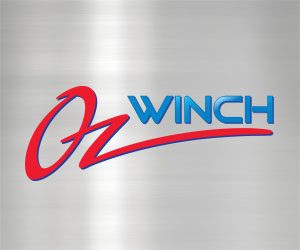Let’s get straight to the point. Yachties and sailors refer to diesel-powered watercraft of all sizes and hull shapes as “stink boats”. With the majority of motorboat owners taking offence at this derogatory term, I thought it pertinent to explore the reasons for the stink, and how you can minimise it and the soot that accumulates on transoms.
Diesel engines produce considerably more torque than petrol engines. Diesel fuel does not have the dangerous side effects of storage and handling as petrols, due to their susceptibility to spontaneously combust due to static electricity and highly volatile vapors.
The diesel engine, being a compression engine, relies on compression to instigate combustion; thus, providing optimum power and fuel economy. However, if compression is compromised, it cannot burn all of the fuel injected into the cylinder. That un-burnt fuel stinks and coats the cylinder head and transom with a mixture of un-burnt fuel and soot, and the smell at idle or trolling can make some seafarers quite ill.
The most important commodity in a diesel-powered boat is the diesel. However, in my twenty-five years of cleaning boat tanks, I have come to realise that the majority of boat owners are totally unaware of the chemistry constantly changing in their fuel tanks and the cancerous-like growths lurking there.
We should all be aware by now that Cladosporium resinae (fuel bug) is a fact of life. The bugs are a family (140 strong) of airborne soil spores that are attracted to hydrocarbon fuels, like a dog to a bitch.
Any surface area in a fuel tank not covered by fuel will allow the air within the tank to heat and expand, exiting the breather during the heat of the day. At night, the expelled air is replaced by moist spore laden air, allowing microscopic amounts of spores and condensation to form on the tank walls and baffles.
Diesel weighs 0.840 grams per liter with water (condensation) at 1,000 grams (1kg) per liter. Consequently, as a vessel is moving on its mooring or underway, the fuel washes the condensation off the walls and baffles of the tank to the bottom. It’s at this water fuel interface that the airborne soil spores that are now immersed in the fuel germinate, deriving oxygen from the water, whilst converting mineral and trace elements in the fuel to yeasts from which they feed and excrete.
These yeasts are the same family as brewer’s and baker’s yeasts, and thrive on heat. The majority of diesel engines cycle their fuel from tank to injector pump and injectors. It then cools the injectors and returns to the tank at engine temperature. This heat allows the germinated bio-mass to thrive and grow exponentially. The mass of fuel bugs weighs one kilo per cubic meter and are like fairy floss, extremely sticky and slimy.
American engines return five litres of diesel a minute back to the tank. Consequently, you can start off on an extended voyage with the fuel in your fuel filter sight glass looking clear and bright, and within hours, that can all change due to the fungal material multiplying and excreting.
The Cladosporium resinae’s excreta acts as a natural surfactant allowing water and hydrocarbons to bond into an emulsion. Fuel filters are designed to prevent solids (rust); they cannot prevent emulsions passing through them as they are designed to allow liquid to pass. This scenario is predominantly why premature failure of pumps and injectors occur.
During combustion, microscopic particles of gum, varnish and secondary components moisture, fungal material, plus unburnt fuel lacquer injector tips and fowl valve faces, these elements slowly but surely decrease the engines combustion efficiency, resulting in increased fuel consumption, increased exhaust emissions and transom soot.
Diesel engines with common rail electronic fuel injection need a top-quality detergent additive to stop the formation of injector nozzle combustion deposits, and to remove those deposits whilst also stopping the formation of internal injector deposits and removing such deposits. This maintains the optimum injector performance and reduces the occurrence of over fuelling and exhaust particulate formation. The detergent cleaning of the injectors also restores power to the designed output, and with the reduction in over fuelling, it reduces the incidence of bore glazing under low load, which leads to power loss and increased exhaust valve fouling.
To summarise, additives have always been included at the refinery in diesel and petrol to enable the optimum performance of the fuel supply system. This has become more critical with the introduction of electronic fuel systems to meet stricter exhaust emission requirements. The correct application of an appropriate detergent additive can enable the engine fuel system to operate as the manufacturer intended and as if it was new all the time. It is important that the additive formulation and amount is appropriate for the purpose intended.
As part of the Australian standard for fuels, there must be a minimum amount of detergent added. In diesel, that equates to 250 parts per million. Fuel Doctors have been manufacturing a detergent-based fuel conditioner injector cleaner for use in our daily tank cleaning operations for the past twenty-five years. After the initial shock treatments to eradicate existing fuel system contaminants including gum, varnish, moisture, microbial material and its excreta, the recommended ongoing treat rate is one millilitre per litre of fuel. That equates to 900 parts per million of detergency to ensure maximum service life of all fuel system components.
Fuel Doctor, as a by-product of its formulation, is also an excellent lubricity enhancer, providing increased lubricity to all diesel-injection components, again extending serviceability. The final attribute of Fuel Doctor are the oxygenated molecules contained within the formula that provide a cleaner burn and bigger bang resulting in better throttle response.
The initial shock treatment of Fuel Doctor will clean the entire fuel system from tanks to inlet and exhaust valves, ensuring the valves re-seat to OEM specs; thus returning lost compression and economy.
Clean fuel systems maintain efficiency and economy with cleaner emissions.
We may not be able to change people’s views on “stink boats”, but we certainly can minimise the stink.
By Steve Marriott, Fuel Doctor



























